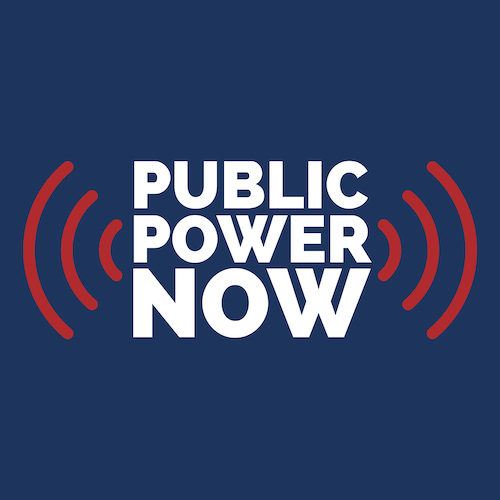Following extensive and collaborative discussions with its customer representatives and key stakeholders, the New York Power Authority has advanced a proposal to issue a Notice of Proposed Rulemaking to adjust its Preference Power rates.
The electricity rates are tied to statutorily authorized NYPA hydropower sold at cost from the Niagara and St. Lawrence-FDR Power Projects.
The rates primarily impact the 51 municipal electric and rural cooperative systems around the state that are eligible to purchase Preference Power and resell it with no markup to their end-use customers and members.
The Preference Power rate increase would have virtually no impact on New Yorkers served by investor-owned utilities or NYPA economic development recipients, NYPA said.
Under the new proposal, Preference Power rate adjustments would, starting April 1, 2026, be phased in over a six-year period to modulate the annual impact on customers.
For a typical residential customer living within a municipal or cooperative system that is subject to this action, NYPA estimates annual cost increases to be about $1-2 a month -- or less than 3% of their total electric bill --based on electrical usages of less than 1,200 kWh per month. A typical New York State residential home uses approximately 600 kWh a month.
While impacts will vary by location and customer usage, the new Preference Power rates would remain the lowest rates in New York State and among the lowest rates in the nation, NYPA noted.
The rate adjustment will continue the Preference Power customers ongoing support for New York’s commitment to clean renewable energy and will also ensure the continued efficient operation of the Power Authority’s large hydropower assets -- which benefit its customers and all New Yorkers -- while directly supporting large infrastructure improvements to those assets, such as the ongoing $1.1 billion NextGen Niagara project.
“This adjustment to our preference power rates is essential to ensure that the Power Authority preserves its hydropower assets to maintain the state’s clean energy backbone while also still delivering some of the lowest electric rates in the country to our customers,” said NYPA President and CEO Justin Driscoll. “I’m grateful to our customers for their collaboration in advancing this proposal, which enables them to plan ahead with financial certainty.”
“Our community-owned public power systems have supported the Niagara hydroelectric project since its inception in the 1950s,” said Municipal Electrical Utilities Association Executive Director James Stokes. “It is essential to the electric system in New York State and beyond, and we are pleased to have reached this agreement to enable its preservation and enhancement for future generations, while ensuring that rates remain appropriate and affordable for our membership.”
“On behalf of the New York Association of Public Power (NYAPP), we recognize and appreciate the Power Authority’s responsiveness to our concerns in the revised rate plan proposal," said New York Association of Public Power President David Leathers. “We stand ready to work with NYPA in the upcoming rulemaking process to confirm that Preference Power is provided at cost, while ensuring the Power Authority has the resources needed to continue to be a leader in providing renewable energy to New York State.”
Preference Power rates are the Power Authority’s lowest possible rates and apply to forty-seven municipal electric systems, four rural electric cooperatives, three upstate investor-owned utilities, seven neighboring states, two transportation authorities, the Tuscarora Nation, and host communities identified by the relicensing agreement for the Niagara Power Project.
As of the last population survey conducted by the Power Authority, the proposed rate change impacts roughly 370,000 New Yorkers who benefit from NYPA’s public power. In total, 1,457 megawatts of hydropower are provided to NYPA customers at Preference Power rates.
The Power Authority first proposed a rate adjustment in December 2024 but withdrew it in February in response to affordability concerns raised by Governor Kathy Hochul and several customer groups. Shortly after withdrawing the proposal, the Power Authority’s customer groups requested that NYPA resume discussions on the rate adjustment.
Since that time, NYPA has worked closely with its customers to develop a plan that would both help to mitigate the annual impact of needed rate adjustments on customer bills and create rate certainty over an extended time frame.
Those efforts resulted in a proposal that reflects lower rates implemented on a longer timeline than originally proposed in 2024 while still enabling NYPA to maintain its commitments to preserving a robust, reliable and clean upstate grid, it noted.
The power provided by NYPA to the municipalities through these rates only accounts for a portion of the end-users electric bill and the NYPA rates for that power are currently sold at $12.88/megawatt hour (MWh), increasing to $14.57 on April 1, 2026. Subsequent adjustments will be made annually in April, on the following schedule: $16.25/MWh in 2027, $17.94/MWh in 2028, $19.63/MWh in 2029, $21.32/MWh in 2030, ending at $23 in 2031.
Under the rate proposal, the current rates -- unchanged since 2014 -- would be adjusted following a 60-day public comment period and NYPA Board of Trustee approval. As noted, the adjusted rates would become effective April 1, 2026. The public comment period will begin on October 8 and will end on December 8.
In addition to the filing of comments, NYPA will hold in-person public forums in Niagara and Albany to receive statements from members of the public.
NYPA staff will consider all the submissions made during the public comment period, including statements received at the public forums, before presenting a final rate recommendation to the NYPA Board of Trustees at its December 9 meeting.

